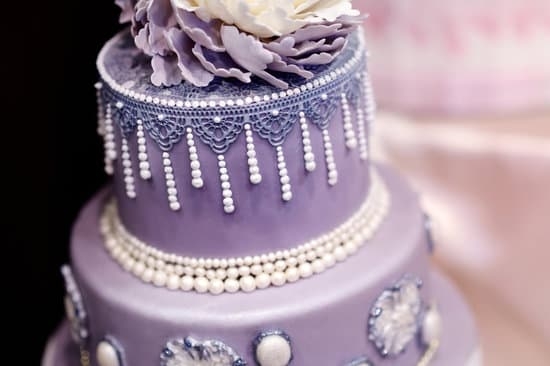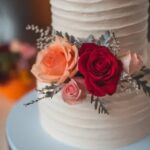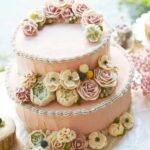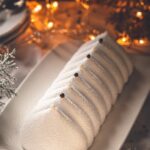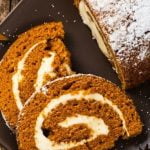Decorating icing is a crucial element in elevating the overall look and taste of a cake. Whether you’re a novice baker or a seasoned pro, knowing how to make decorating icing for cakes is a valuable skill that can take your creations to the next level. From classic buttercream to intricate fondant, the type of icing you choose can significantly impact the final presentation of your baked masterpiece.
When it comes to cake decoration, the right icing can make all the difference. Buttercream, royal icing, and fondant are just some of the popular types of decorating icing used by bakers worldwide. Each type has its own unique texture and flavor profile, making them suitable for different cake decorating techniques and styles.
In this article, we will delve into the world of decorating icing, exploring the various types available, detailing the essential ingredients needed for each recipe, and providing step-by-step guides on how to make buttercream, royal icing, and fondant. Whether you’re looking to master basic techniques or experiment with advanced designs, understanding how to create different types of decorating icing is key to achieving professional-looking results in your cake creations.
Types of Decorating Icing
Buttercream Icing
One of the most popular types of decorating icing is buttercream, known for its creamy texture and sweet flavor. To make buttercream icing, you will need simple ingredients such as butter, powdered sugar, vanilla extract, and a bit of milk or cream. Start by creaming the butter until smooth, then gradually add in the powdered sugar and vanilla extract.
Adjust the consistency with milk or cream until you reach your desired thickness. Buttercream icing is perfect for piping decorations, covering cakes smoothly, or adding swirls and textures.
Royal Icing
Royal icing is a versatile type of decorating icing that hardens when dried, making it ideal for creating intricate designs and decorations on cakes. To make royal icing, you will need egg whites or meringue powder, powdered sugar, and a touch of water or lemon juice. Mix the ingredients together until stiff peaks form to achieve the right consistency.
Royal icing is commonly used for creating piped decorations like flowers, lace patterns, and intricate details on cookies and cakes. Its fast-drying properties make it excellent for intricate designs that need to hold their shape.
Fondant Icing
Fondant icing is a smooth and pliable type of decorating icing that can be rolled out to cover cakes entirely or shaped into various decorations like flowers and figures. To make fondant icing at home, you will need marshmallows, water, confectioners’ sugar (powdered sugar), flavorings like vanilla extract or almond extract. Melt marshmallows with water in a microwave-safe bowl before gradually adding confectioners’ sugar until a dough-like consistency forms.
Knead the mixture until smooth before rolling it out for cake covering or shaping into decorative elements like bows or ribbons. Fondant icing provides a polished look to cakes and allows for creative detailing in cake decoration projects.
By understanding the different types of decorating icings like buttercream, royal icing, and fondant along with their specific ingredients and uses, you can enhance your cake decorating skills significantly. Experimenting with these various icings will allow you to create unique designs on your cakes while adding depth and dimension to your creations.
Whether you prefer the creamy sweetness of buttercream or the delicate intricacies of royal icing, mastering the art of homemade decorating icings will bring your cake decorating game to a whole new level.
Ingredients Needed to Make Decorating Icing
Decorating icing is a crucial element in cake making, as it not only adds flavor but also contributes to the overall aesthetics of the baked creation. The type of icing used can greatly impact the final look and taste of the cake. There are several popular types of decorating icing, including buttercream, royal icing, and fondant, each with its own unique characteristics and uses.
To make decorating icing for cakes, you will need specific ingredients depending on the type of icing you choose to use. For buttercream icing, you typically require butter, powdered sugar, vanilla extract, and milk or cream. Royal icing, on the other hand, is made from egg whites or meringue powder, powdered sugar, and sometimes lemon juice or cream of tartar. Fondant icing consists of marshmallows (or marshmallow fluff), powdered sugar, water or corn syrup, and vegetable shortening.
Each type of decorating icing has its own distinct flavor profile and texture, making them suitable for different purposes in cake decoration. Buttercream is known for its creamy texture and simple application for frosting cakes. Royal icing dries to a hard finish, making it ideal for intricate designs like piping flowers or creating delicate details. Fondant produces a smooth and polished look on cakes and can be molded into various shapes for more elaborate decorations.
| Type of Icing | Key Ingredients |
|---|---|
| Buttercream | Butter, powdered sugar, vanilla extract |
| Royal Icing | Egg whites/merringue powder, powdered sugar |
| Fondant | Marshmallows/marshmallow fluff,powdered sugar |
Understanding the specific ingredients needed for each type of decorating icing is essential in achieving the desired outcome when decorating cakes. By following recipes that call for these specific ingredients and proportions, you can create delicious and visually appealing treats that are sure to impress your friends and family. Experimenting with different types of decorating icing can also help you discover new techniques and styles to elevate your cake decorating skills to a whole new level.
Step-by-Step Guide on Making Buttercream Icing
Buttercream icing is a classic choice for decorating cakes due to its smooth texture and delicious flavor. Making your own buttercream icing at home is easier than you might think, and it allows you to customize the sweetness and consistency to suit your preference. Here is a step-by-step guide on how to make classic buttercream icing:
Ingredients:
- 1 cup (2 sticks) unsalted butter, softened
- 4 cups confectioners’ sugar
- 2 tsp vanilla extract
- 2-4 tbsp heavy cream or milk
Instructions:
- In a mixing bowl, beat the softened butter on medium speed until creamy.
- Gradually add the confectioners’ sugar, one cup at a time, while continuing to mix on low speed.
- Add the vanilla extract and 2 tablespoons of heavy cream or milk, then increase the speed to medium-high and beat until smooth and fluffy.
- If the icing is too thick, add more cream or milk in small amounts until you reach your desired consistency.
- Once your buttercream icing is ready, use it to frost your cakes, cupcakes, or cookies using a piping bag for decorative designs.
Making your own buttercream icing gives you full control over the ingredients used and allows you to experiment with different flavors by adding extracts or food coloring. Whether you prefer a simple vanilla buttercream or want to try something more adventurous like chocolate or caramel buttercream, mastering this basic recipe will open up endless possibilities for decorating your baked goods with flair and creativity.
Give it a try next time you bake a cake and impress your friends and family with homemade buttercream icing that tastes as good as it looks.
Step-by-Step Guide on Making Royal Icing
Royal icing is a versatile decorating icing that is commonly used in cake decorating for creating intricate designs, piping borders, and making delicate decorations. It is known for drying to a hard, smooth finish, making it ideal for intricate detailing. Here’s a step-by-step guide on how to make royal icing for your cakes:
Firstly, gather the necessary ingredients: confectioners’ sugar (powdered sugar), egg whites or meringue powder, and water. The ratio of these ingredients will depend on the consistency you desire for your royal icing. For a firmer consistency good for outlining and piping details, use less water. For flooding and covering larger areas smoothly, add more water.
In a clean bowl, combine the confectioners’ sugar and egg whites or meringue powder. Mix these ingredients together until they are well combined. Add water gradually while mixing until you reach the desired consistency. If you want to add color to your royal icing, use gel food coloring as liquid coloring can change the consistency of the icing.
Once you have achieved the right consistency and color for your royal icing, transfer it to a piping bag fitted with a small round tip for outlining or writing, or a larger tip for flooding areas with color. Remember that royal icing sets quickly when exposed to air, so cover any unused portions with plastic wrap to prevent it from drying out.
Now you are ready to unleash your creativity by using this versatile icing to decorate your cakes in various designs and patterns.
| Ingredients | Royal Icing |
|---|---|
| Confectioners’ sugar (powdered sugar) | X cups |
| Egg whites or meringue powder | X tablespoons |
| Water | X tablespoons |
Step-by-Step Guide on Making Fondant Icing
Fondant icing is a popular choice for cake decorators due to its smooth texture and versatility in creating intricate designs. Making your own fondant icing at home allows you to customize the flavor, color, and consistency according to your preference. Here is a step-by-step guide on how to make fondant icing for your next cake decoration project.
Gather Your Ingredients
To make fondant icing, you will need marshmallows, powdered sugar, water, vegetable shortening, and flavoring extracts such as vanilla or almond. The marshmallows will form the base of the fondant while powdered sugar helps achieve the desired consistency. Vegetable shortening prevents the fondant from sticking to surfaces while flavoring extracts add a delicious taste to the icing.
Melt the Marshmallows
Start by melting the marshmallows in a microwave-safe bowl with a bit of water. Heat them in short intervals, stirring in between until completely melted. Be careful not to overheat as this can cause the marshmallows to burn. Once melted, allow the mixture to cool slightly before proceeding.
Add Powdered Sugar and Flavoring
Gradually mix in sifted powdered sugar into the melted marshmallow mixture until it forms a sticky dough-like consistency. Add a small amount of vegetable shortening and flavoring extract while kneading the dough until it becomes smooth and pliable. If the fondant is too dry, add more vegetable shortening; if it’s too sticky, add more powdered sugar.
By following these steps, you can create smooth and versatile fondant icing that will take your cake decorating skills to the next level. Experiment with different colors using food coloring gel or dusts and unleash your creativity by sculpting unique figures or covering cakes with flawless fondant finishes. Homemade fondant icing adds a personal touch to your creations and impresses guests with its professional look – perfect for special occasions or everyday baking projects.
Tips for Decorating With Icing
Decorating cakes with icing can take your baked creations to the next level, adding not just flavor but also aesthetic appeal. Whether you’re a beginner or a seasoned baker, knowing how to make decorating icing for cake is an essential skill in the world of baking. From classic buttercream to elegant royal icing and versatile fondant, there are various types of icing that can be used to decorate cakes and unleash your creativity.
When it comes to decorating with icing, each type offers unique qualities that can enhance the overall look and taste of your cake. Here are some expert tips on how to use different types of icing effectively:
- Buttercream: Buttercream is a popular choice for cake decoration due to its creamy texture and smooth consistency. To achieve perfect piping and intricate designs with buttercream, make sure the frosting is at the right temperature – too warm and it will melt, too cold and it will be hard to work with. Use a piping bag fitted with different tips to create various designs such as rosettes, swirls, or borders.
- Royal Icing: Royal icing dries hard, making it ideal for detailed decorations like flowers, lace patterns, or lettering on cakes. When working with royal icing, be sure to cover any unused portion immediately as it dries quickly when exposed to air. Use a thin consistency for outlining and flooding techniques on sugar cookies or intricate designs on cakes.
- Fondant: Fondant is a smooth icing that provides a sleek finish to cakes, creating a polished look suitable for special occasions like weddings or birthdays. To prevent fondant from drying out while working with it, keep it covered with plastic wrap or in an airtight container. Use fondant tools and cutters to create shapes, textures, and embellishments for unique cake designs.
By mastering the art of using different types of icing creatively, you can elevate your cake decorating skills and impress your guests with beautifully designed confections that not only taste delicious but also look stunning. Experiment with colors, textures, and techniques to personalize your creations and let your imagination run wild in the world of cake decorating.
Common Decorating Icing Mistakes to Avoid
Decorating icing is an essential element in cake making, as it adds not only flavor but also aesthetic appeal to the finished product. Whether you are a beginner or a seasoned baker, knowing how to make decorating icing for cakes can elevate your creations to the next level. However, even with the right ingredients and techniques, common decorating icing mistakes can easily occur and compromise the overall look and taste of your cake.
One of the most common mistakes when working with decorating icing is using incorrect measurements of ingredients. For example, adding too much liquid to buttercream icing can result in a runny consistency that is difficult to work with. To avoid this, be sure to follow recipes closely and use measuring tools to ensure accuracy. Similarly, using expired or poor quality ingredients can lead to undesirable results. Always check the freshness of your ingredients before starting the icing-making process.
Another pitfall to watch out for when working with decorating icing is overmixing. With buttercream icing, for instance, excessive mixing can cause air bubbles to form, resulting in a less smooth finish on the cake. It’s important to mix the icing just enough to combine all the ingredients and achieve the desired consistency.
Additionally, rushing through the cooling process of royal icing can cause it to become too thick or too thin for piping designs effectively. Be patient and follow cooling recommendations closely for best results. By being mindful of these common pitfalls and following best practices, you can ensure that your decorating icing enhances the beauty and taste of your cakes every time.
Conclusion
In conclusion, mastering the art of making decorating icing for cakes opens up a world of creative possibilities in the realm of baking. Whether you choose to work with buttercream, royal icing, or fondant, understanding the specific ingredients and techniques required for each type of icing is crucial in achieving professional-looking results. By following our step-by-step guides and incorporating our expert tips on decorating with icing, you can elevate your cake decorating skills to new heights.
Homemade icing not only allows you to customize the flavors and colors to suit your preferences but also adds a personal touch to your baked creations. Experimenting with different types of icing can help you discover your unique style and aesthetic in cake decorating. From intricate designs made with royal icing to smooth fondant finishes, there are endless possibilities for showcasing your creativity and imagination through homemade decorating icing.
So why not roll up your sleeves, gather your ingredients, and embark on a cake decorating journey fueled by homemade icing? Armed with the knowledge of how to make decorating icing for cakes and armed with the inspiration to get creative, there is no limit to what you can achieve in the world of baking.
Let your imagination run wild, explore various techniques, and most importantly, have fun while creating edible works of art that will surely delight both your eyes and taste buds.
Frequently Asked Questions
What Kind of Icing Is Best for Decorating Cakes?
The best icing for decorating cakes is typically royal icing or buttercream frosting. Royal icing hardens well, making it perfect for intricate designs, while buttercream is versatile and easy to work with.
How Do You Mix Icing Sugar for Decorations?
To mix icing sugar for decorations, start by sifting the sugar to remove any lumps. Gradually add liquid (such as water, milk, or lemon juice) until you reach your desired consistency. Mix thoroughly to ensure a smooth texture.
Is Decorating Icing the Same as Frosting?
Decorating icing and frosting are similar but not exactly the same. Frosting tends to be creamier and used for covering cakes, while decorating icing is thicker and often used for piping details or writing on cakes. Each serves its own purpose in cake decoration.

Welcome to our cake decorating blog! My name is Destiny Flores, and I am the proud owner of a cake decorating business named Cake Karma. Our mission is to provide delicious, beautiful cakes for all occasions. We specialize in creating custom cakes that are tailored specifically to each customer’s individual needs and tastes.

